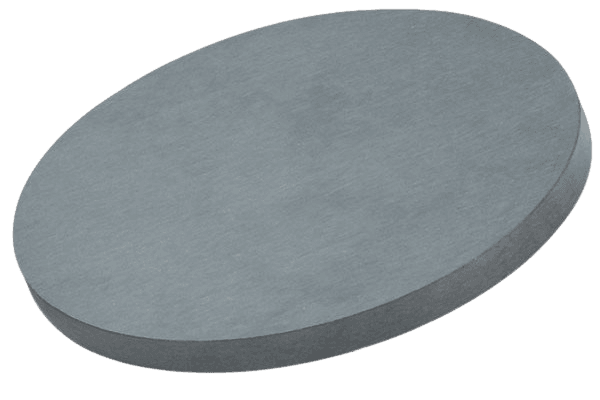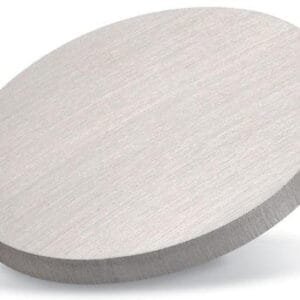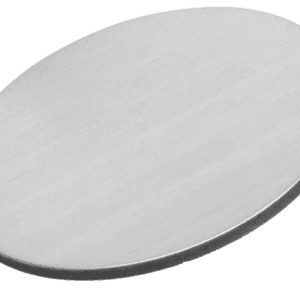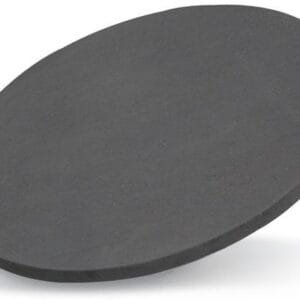Gallium Arsenide Sputtering Target Description
Related Product: Zinc Oxide with Gallium Oxide Sputtering Target, Gallium (III) Telluride Sputtering Target
Gallium Arsenide Sputtering Target Specifications
| Compound Formula | GaAs |
| Molecular Weight | 144.64 |
| Appearance | Grey Target |
| Melting Point | 1238 °C |
| Density | 5.3 g/cm3 |
| Available Sizes | Dia.: 1.0″, 2.0″, 3.0″, 4.0″, 5.0″, 6.0″ Thick: 0.125″, 0.250″ |
Gallium Arsenide Sputtering Target Handling Notes
Indium bonding is recommended for Gallium Arsenide (GaAs) Sputtering Targets due to specific challenges associated with the material:
- Brittleness: GaAs can be brittle, making it prone to cracking or breaking during the sputtering process.
- Low Thermal Conductivity: GaAs has low thermal conductivity, which can lead to uneven temperature distribution and potential thermal stress during deposition.
- Thermal Shock Susceptibility: The material’s susceptibility to thermal shock can cause instability during sputtering if not managed properly.
Indium bonding helps address these issues by providing better thermal and mechanical stability, ensuring that the GaAs Sputtering Targets perform optimally and maintain their integrity throughout the deposition process.
Gallium Arsenide Sputtering Target Application
Gallium Arsenide Sputtering Target Packaging
Our Gallium Arsenide Sputtering Target is meticulously handled during storage and transportation to ensure that it retains its original quality and performance.





Reviews
There are no reviews yet.